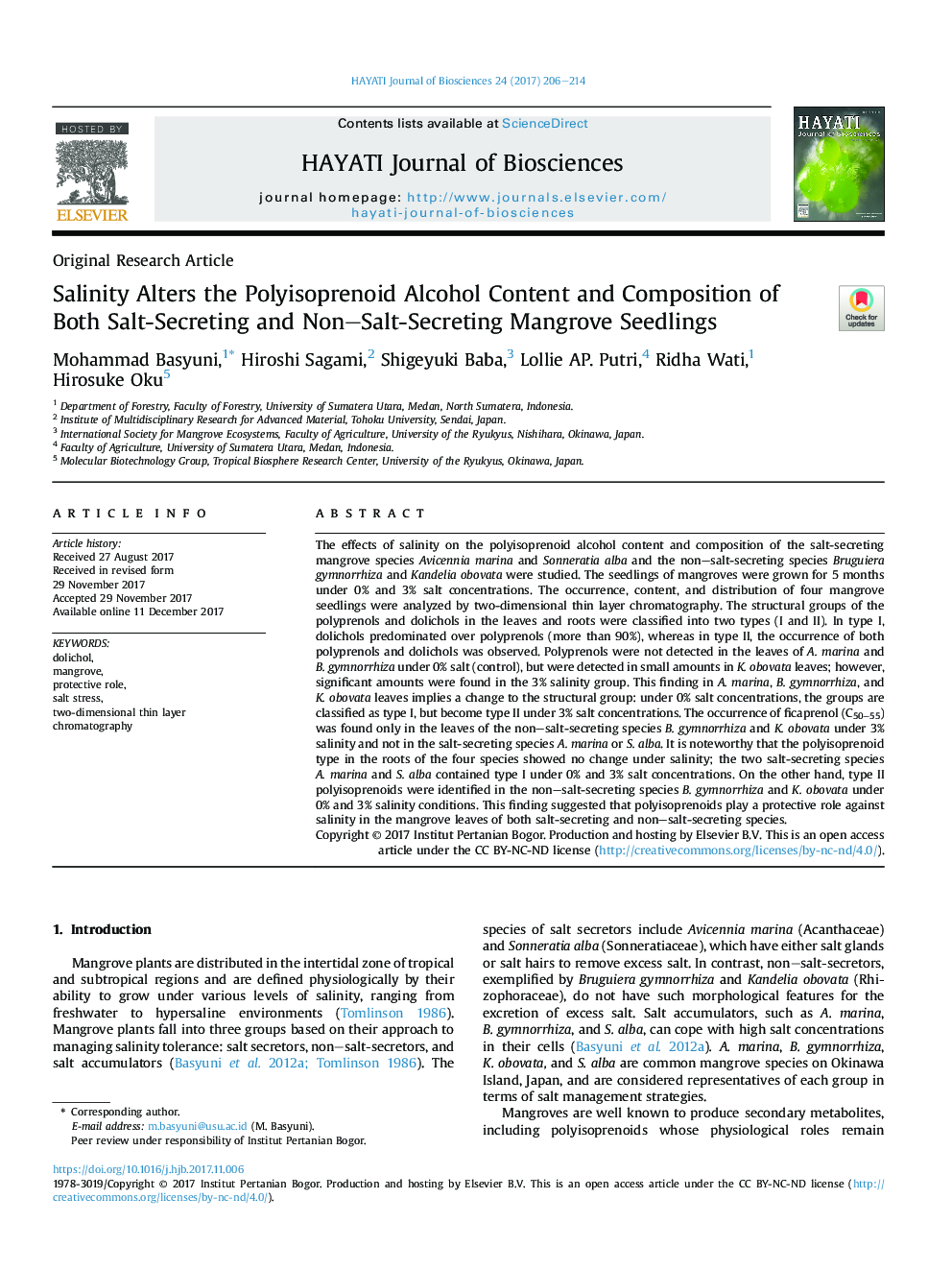| کد مقاله | کد نشریه | سال انتشار | مقاله انگلیسی | نسخه تمام متن |
|---|---|---|---|---|
| 8415043 | 1545463 | 2017 | 9 صفحه PDF | دانلود رایگان |
عنوان انگلیسی مقاله ISI
Salinity Alters the Polyisoprenoid Alcohol Content and Composition of Both Salt-Secreting and Non-Salt-Secreting Mangrove Seedlings
ترجمه فارسی عنوان
شوری باعث تغییر محتوای الیاف پلی ایزوپرنویید و ترکیب هر دو جدایه نمک و ترشح نمک می شود.
دانلود مقاله + سفارش ترجمه
دانلود مقاله ISI انگلیسی
رایگان برای ایرانیان
کلمات کلیدی
موضوعات مرتبط
علوم زیستی و بیوفناوری
علوم کشاورزی و بیولوژیک
بوم شناسی، تکامل، رفتار و سامانه شناسی
چکیده انگلیسی
The effects of salinity on the polyisoprenoid alcohol content and composition of the salt-secreting mangrove species Avicennia marina and Sonneratia alba and the non-salt-secreting species Bruguiera gymnorrhiza and Kandelia obovata were studied. The seedlings of mangroves were grown for 5 months under 0% and 3% salt concentrations. The occurrence, content, and distribution of four mangrove seedlings were analyzed by two-dimensional thin layer chromatography. The structural groups of the polyprenols and dolichols in the leaves and roots were classified into two types (I and II). In type I, dolichols predominated over polyprenols (more than 90%), whereas in type II, the occurrence of both polyprenols and dolichols was observed. Polyprenols were not detected in the leaves of A. marina and B. gymnorrhiza under 0% salt (control), but were detected in small amounts in K. obovata leaves; however, significant amounts were found in the 3% salinity group. This finding in A. marina, B. gymnorrhiza, and K. obovata leaves implies a change to the structural group: under 0% salt concentrations, the groups are classified as type I, but become type II under 3% salt concentrations. The occurrence of ficaprenol (C50-55) was found only in the leaves of the non-salt-secreting species B. gymnorrhiza and K. obovata under 3% salinity and not in the salt-secreting species A. marina or S. alba. It is noteworthy that the polyisoprenoid type in the roots of the four species showed no change under salinity; the two salt-secreting species A. marina and S. alba contained type I under 0% and 3% salt concentrations. On the other hand, type II polyisoprenoids were identified in the non-salt-secreting species B. gymnorrhiza and K. obovata under 0% and 3% salinity conditions. This finding suggested that polyisoprenoids play a protective role against salinity in the mangrove leaves of both salt-secreting and non-salt-secreting species.
ناشر
Database: Elsevier - ScienceDirect (ساینس دایرکت)
Journal: HAYATI Journal of Biosciences - Volume 24, Issue 4, October 2017, Pages 206-214
Journal: HAYATI Journal of Biosciences - Volume 24, Issue 4, October 2017, Pages 206-214
نویسندگان
Mohammad Basyuni, Hiroshi Sagami, Shigeyuki Baba, Lollie AP. Putri, Ridha Wati, Hirosuke Oku,
